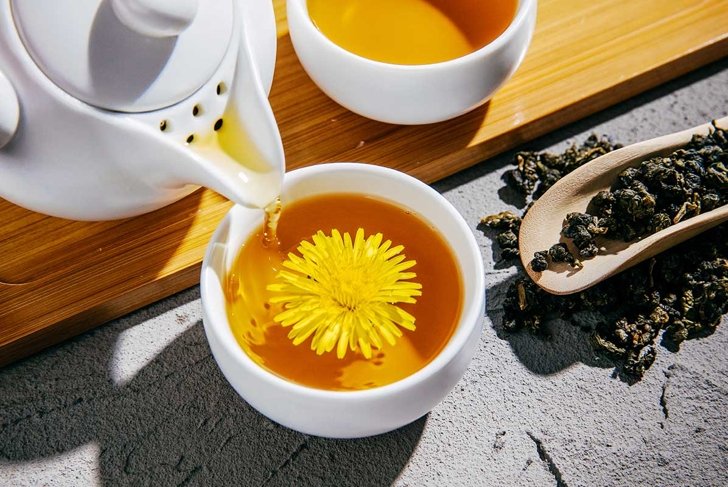
Dandelions are often thought of as an impediment to a beautiful lawn or garden. But these flowers are more than just a weed—they’re the whole plant deal.
Not only are dandelion leaves delicious and wholesome in your salads and soups, but the blossoms and roots are also great sources of health-giving nutrients. Instead of killing them, eat them! Read on for all you need to know to embrace dandelions as part of a healthy diet.
01
Why dandelions?

These everyday plants are high in calcium, a good source of iron, zinc, and potassium, and are filled with vitamins A, C, K, and the Bs. Their reputation as medicinal plants reaches at least as far back as ancient Greece. One cup (250 mL) of raw dandelion greens equals one daily serving of veggies.
02
Where to harvest

Some of the best places to find dandelions include meadows, pastures, open spaces, and areas cleared of wild vegetation—dandelions thrive in cultivated soil. Since seeds are small, they can settle into tight spaces, so you can also find them in crevices of walls and fences. Dandelions found in shadier areas, where growth is delayed, tend to offer younger, less bitter leaves.
Remember:
Stay clear of dandelions if you’re not absolutely sure they haven’t been exposed to fertilizers, herbicides, pesticides, or any other chemical contaminants.
03
When to pick them
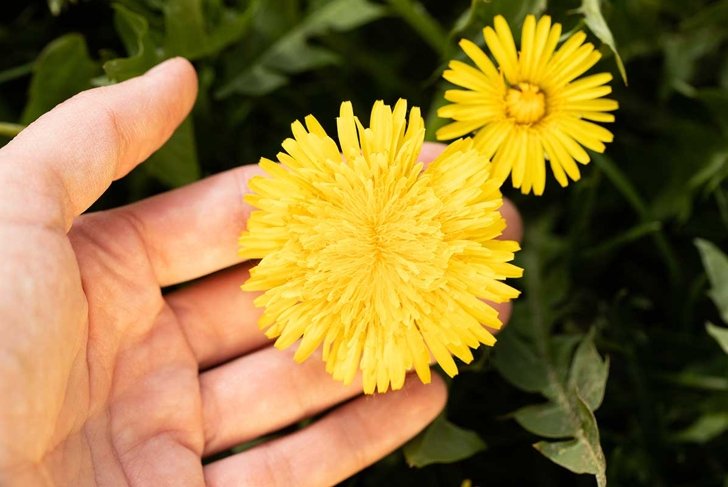
Dandelions are best when picked during the springtime, before or as the dandelion flowers bloom, or in late fall—after the first frost, the plant’s bitterness diminishes. If picked between these times, be sure to blanch the leaves to temper bitterness. Sunny days can also make it easier to spot dandelions, as their flowers close during rainy, cloudy weather.
04
Where not to pick them
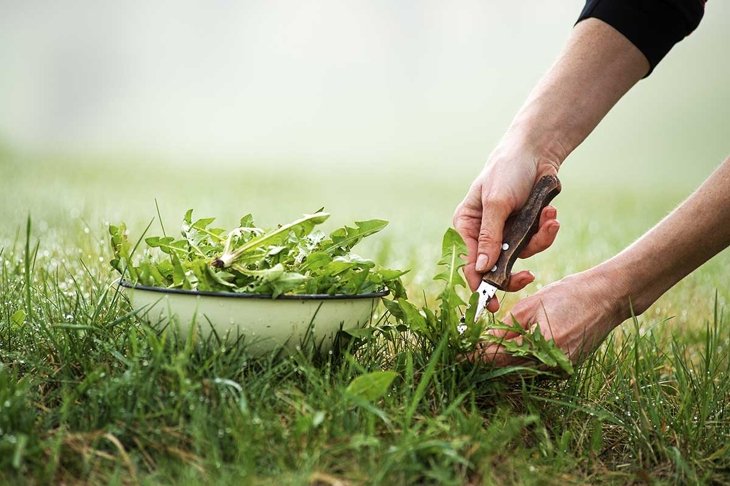
Be sure to steer clear of dandelions that have grown in areas where dangerous chemicals, pesticides, or herbicides may have drained into the soil—even your own lawn if chemicals might have been used on it. Other areas to avoid include roadsides that could be contaminated by exhaust fumes and winter salting, as well as parkland where dogs and other animals run free. Be sure to always wash leaves thoroughly, twice.
05
Select the right leaves

When selecting dandelion leaves to use, be sure to choose young, tender leaves (they’re less bitter). You can use these in your favorite salad and soup recipes instead of snoozy spinach. Dandelion leaves are delicious in this warm salad with apples, bacon, and grainy mustard.
06
Toss and dress them for salads
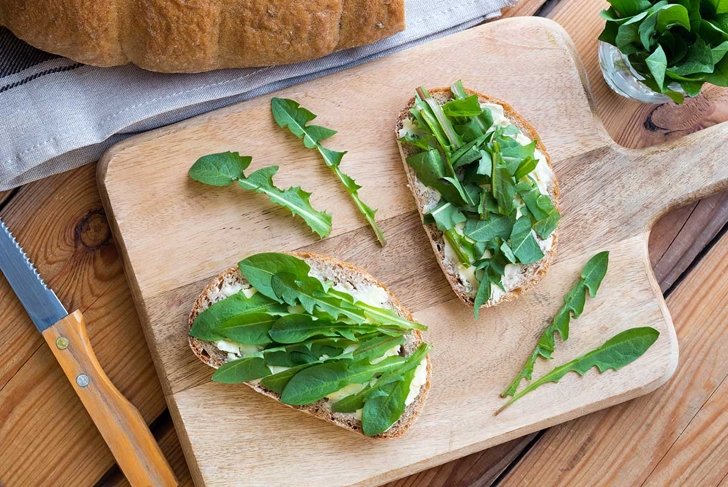
If picked when their shiny, green leaves first appear in spring, dandelion leaves add a sharp zing to salads. However, the word bitter dominates descriptions of their taste. To mute bitterness, recipes recommend blending the leaves with other vegetables—lettuce, endive, and shallots—then adding nuts, cheese, and vinaigrette dressing. The crisp leaves also deliver a sandwich with a bite when placed between buttered whole wheat slices and sprinkled with salt, pepper, and lemon juice.
07
Use them in vegetable and pasta dishes
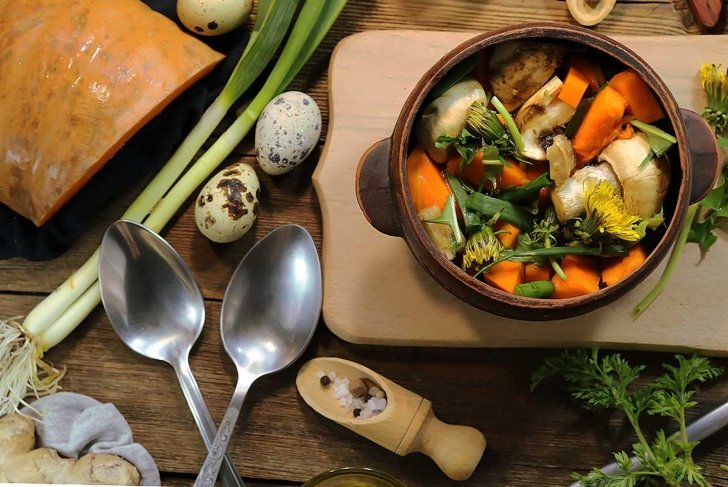
Blanching the leaves in boiling, slightly salted water tempers the taste when they’re really bitter, while sautéing them for two to four minutes more in olive oil, lemon juice, and crushed garlic produces a result similar in flavor and texture to spinach. You can also toss the cooked dandelion leaves into vegetable and pasta dishes to add a fresh twist to everyday menus.
08
Pick the roots
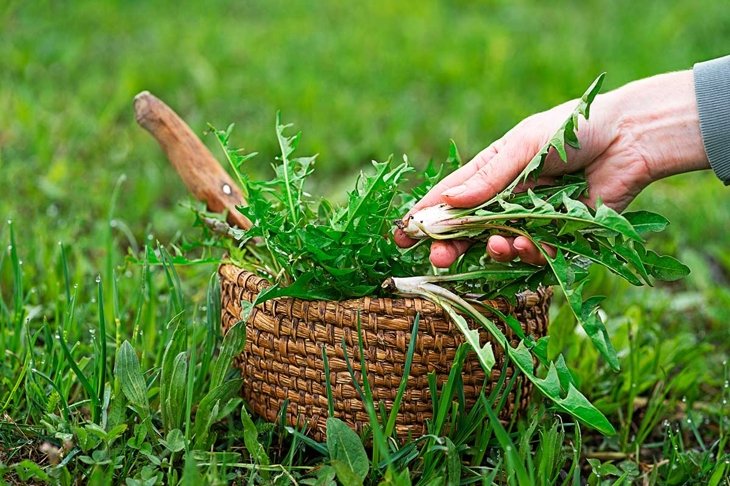
When picking dandelions to use for their roots, choose mature plants (they have bigger roots). Drive a pitchfork firmly into the ground, avoiding the root, tipping backward to lift and loosen the soil, then grip below the leaves and pull up gently. Once harvested, trim, clean, chop, and store in the fridge. The roots can be used to steep for tea or roast and use as a coffee substitute (see our dandy Dandelion Cinnamon-Spiked Iced Coffee recipe)
09
Roast and sip them
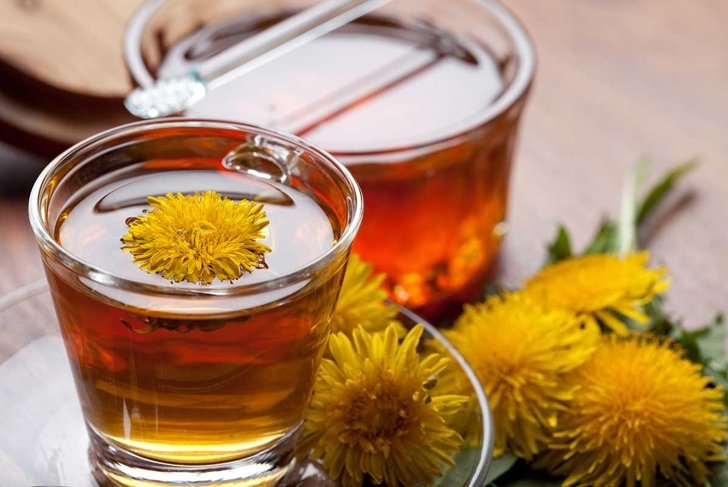
Spring dandelion roots are best for making tea or coffee. Dig them before the aerial portion of the plant develops. Scrub the root clean, split lengthways, and steam for 5 minutes or so to congeal the root sap. Cool and chop into small pieces and place in a 300 F (150 C) oven with the door slightly ajar to allow moisture to evaporate. When they’re a nice chocolate brown and crackling dry, remove and cool. To make your beverage, grind in a coffee grinder and use 1 tsp (5 mL) per cup (250 mL) of boiling water.
10
Use the blossoms
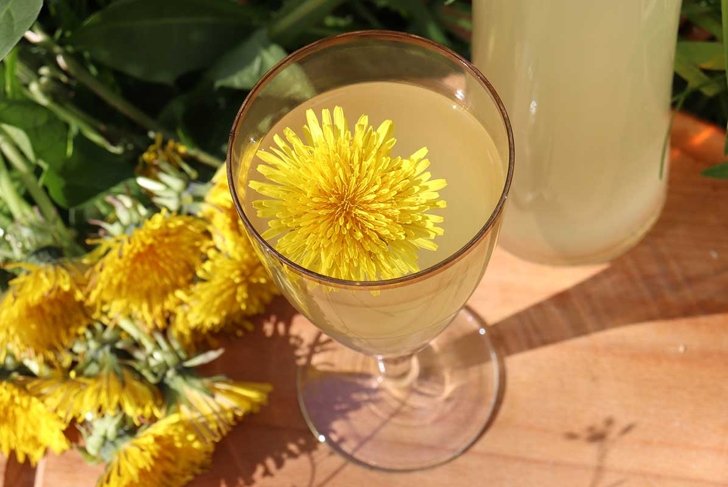
To select the perfect dandelion blossoms, pick when they’re bright yellow and young. You can use them fresh—without the stems—in salads, for wine, or sautéed in butter. Consider using them as a garnish on this Dandelion Dip with Polenta Fries, which uses almost every part of the dandelion.



